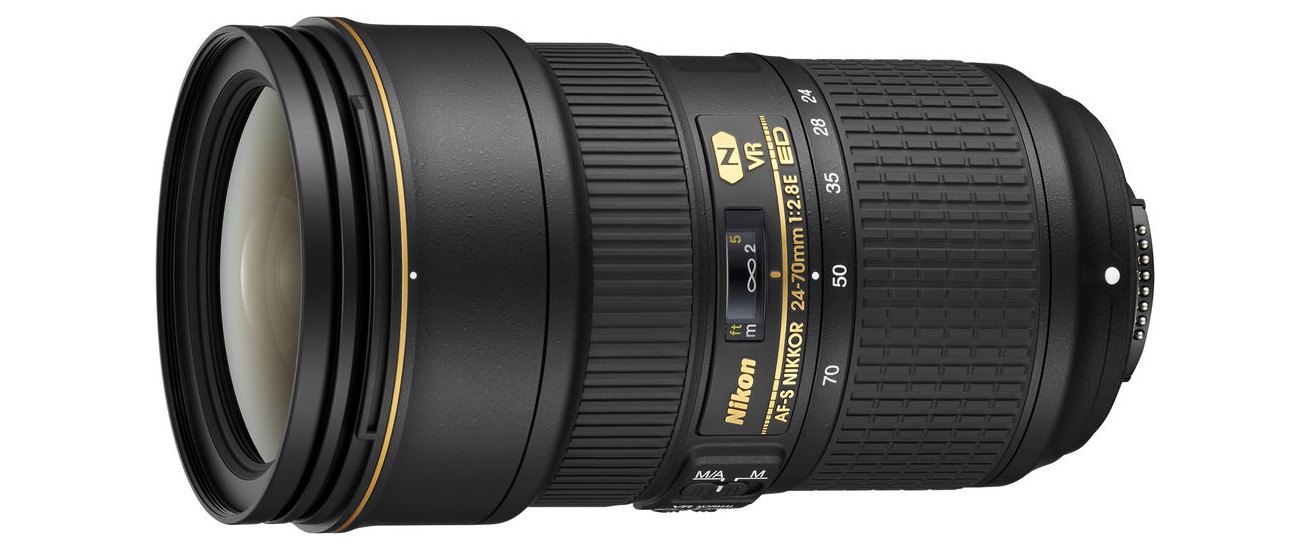Digital Camera World Verdict
Nikon’s latest and greatest F-mount ‘trinity’ standard zoom for DSLRs is built like a tank and is relatively large for this class of lens. Image quality and overall performance are the key aspects of the design, with no concession to keeping the size and weight down. It’s certainly super-sharp but relatively uninspiring in terms of color fringing and distortions.
Pros
- +
Top-notch build quality
- +
4-stop Vibration Reduction
- +
Excellent sharpness
Cons
- -
Very big and pretty weighty
- -
Image quality could be better
- -
Expensive to buy
Why you can trust Digital Camera World
Measuring 155mm in length, the Nikon AF-S 24-70mm f/2.8E ED VR is one of the biggest standard zoom lenses on the market, and it weighs in at over a kilogram. You’d be forgiven for assuming it had an internal zoom mechanism but it extends even further at both ends of the zoom range. To be fair though, Nikon's own Z 24-70mm f/2.8 S is only about an inch shorter.
Specifications
Mount: Nikon F (FX)
Full-frame: Yes
Autofocus: Yes
Stabilization: Yes
Lens construction: 20 elements in 16 groups
Angle of view: 84-34.3 degrees
Diaphragm blades: 9
Minimum aperture: f/22
Minimum focusing distance: 0.38m
Maximum magnification ratio: 0.27x
Filter size: 82mm
Dimensions: 88x155mm
Weight: 1,070g
Key features
Completely redesigned a few years ago, this latest edition adds 4-stop stabilization whereas the previous incarnation had none. It also gains a completely new optical design, incorporating four ED (Extra-low Dispersion) elements, an HRI (High Refractive Index) element and both Nano Crystal Coat and Super Integrated Coating. The 9-blade diaphragm is also upgraded with electromagnetic control. This enhances consistency throughout bursts of shooting in high-speed continuous drive but makes the lens incompatible with some older Nikon DSLRs.
Build quality is very good, in keeping with the demanding professional photography sector at which the lens is aimed. Extensive weather-seals are employed in the construction and fluorine coatings are applied to the front and rear elements.
Performance
The lens is capable of magnificent results but proved relatively uninspiring in our lab-tests. It loses out to Nikon’s newer full-frame Z-mount standard zooms for sharpness, and has much more noticeable color fringing, distortions and vignetting. For overall performance, we prefer the Sigma 24-70mm f/2.8 DG OS HSM Art lens, which is also significantly less expensive to buy.
Lab results
We run a range of lab tests under controlled conditions, using the Imatest Master testing suite. Photos of test charts are taken across the range of apertures and zooms (where available), then analyzed for sharpness, distortion and chromatic aberrations.
We use Imatest SFR (spatial frequency response) charts and analysis software to plot lens resolution at the center of the image frame, corners and mid-point distances, across the range of aperture settings and, with zoom lenses, at four different focal lengths. The tests also measure distortion and color fringing (chromatic aberration).
Sharpness:
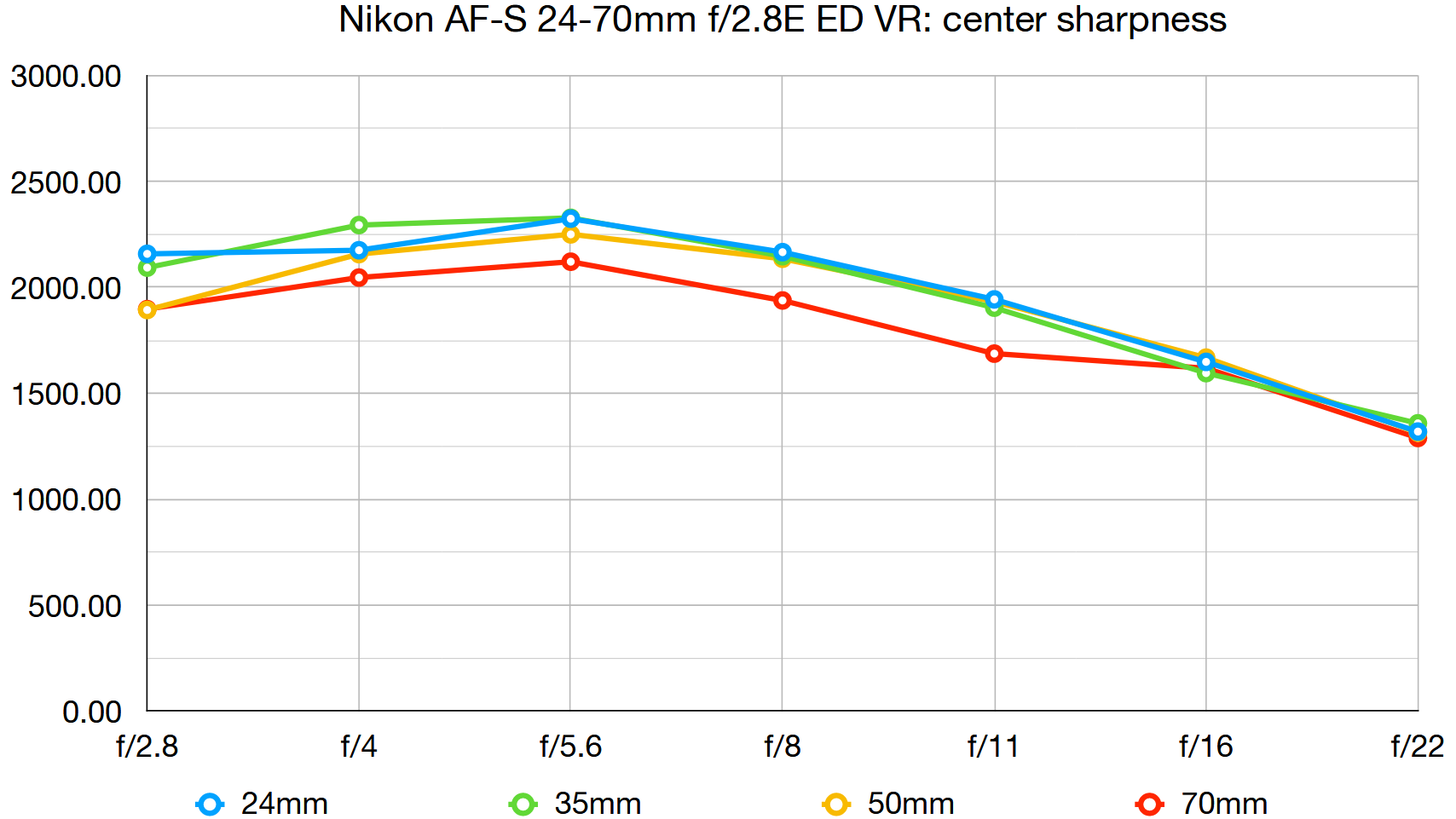
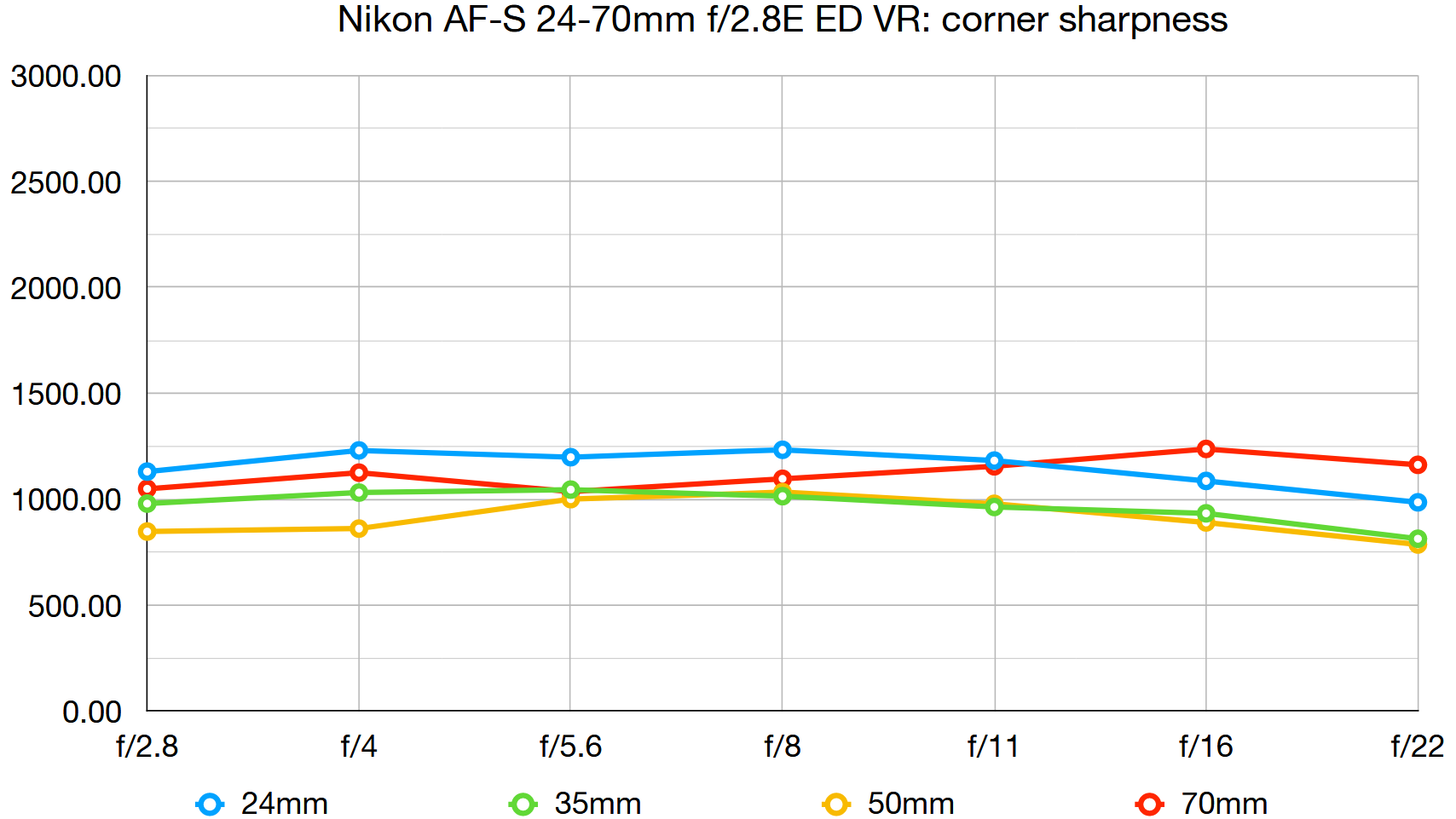
Center-sharpness is exceptional for an F-mount lens, throughout the entire zoom range. Edge/corner-sharpness is relatively mediocre, especially at medium to long zoom settings.
Fringing:
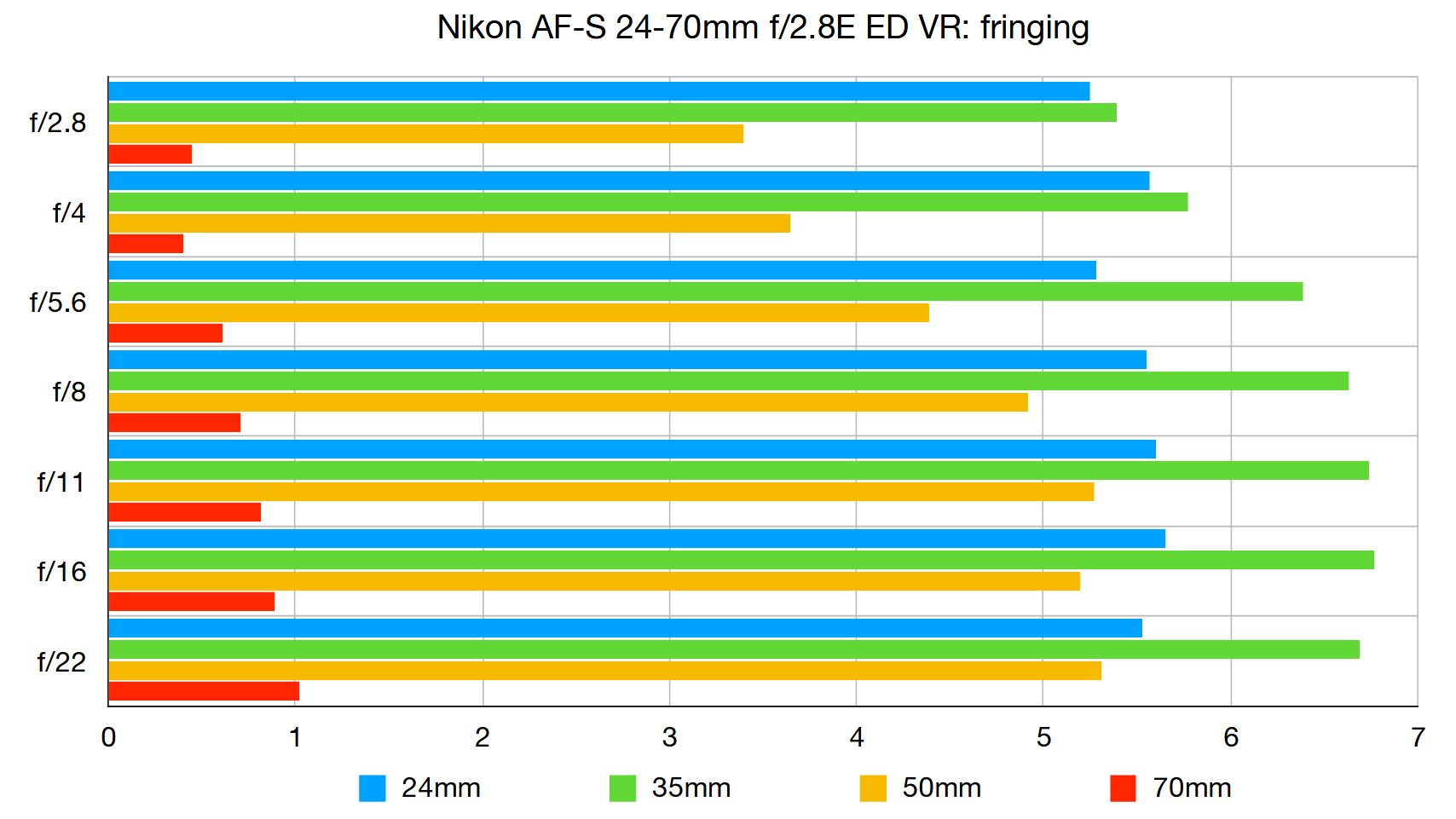
Color fringing is very noticeable in the 24-35mm sector of the zoom range, when uncorrected. It’s slightly less pronounced at 50mm and dies away almost completely at the longest zoom setting.
Distortion:
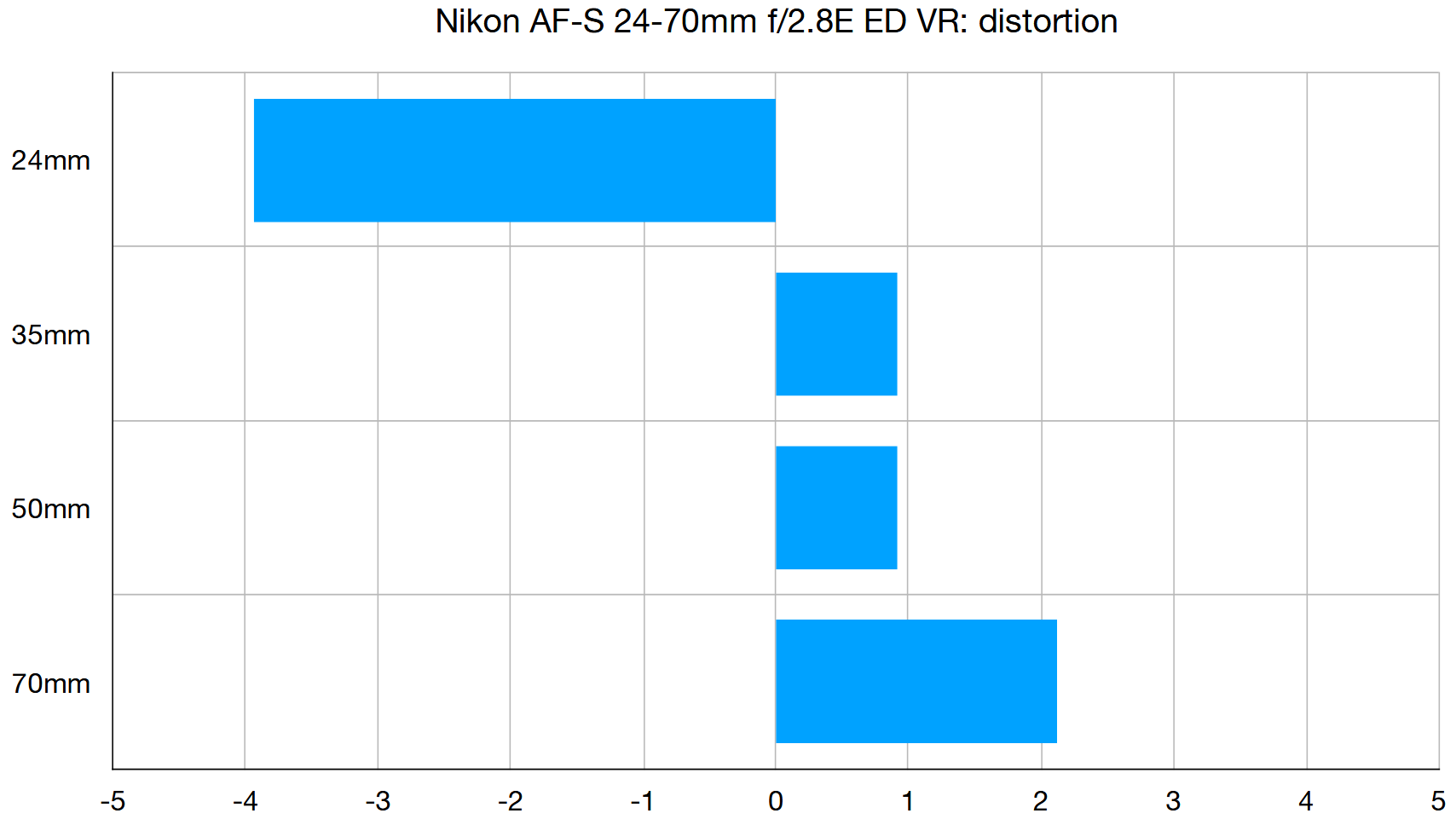
There’s noticeable barrel distortion at 24mm, while pincushion is almost as bad at 70mm. On the plus side, there’s hardly any noticeable distortion in the 35-70mm sector of the zoom range.
Verdict
Nikon’s latest and greatest F-mount ‘trinity’ standard zoom for DSLRs is built like a tank and is relatively large for this class of lens. Image quality and overall performance are the key aspects of the design, with no concession to keeping the size and weight down. It’s certainly super-sharp but relatively uninspiring in terms of color fringing and distortions.
Read more:
• Best camera lenses to get
• Best Canon lenses
• Best Nikon lenses
• Best Sony lenses
Matthew Richards is a photographer and journalist who has spent years using and reviewing all manner of photo gear. He is Digital Camera World's principal lens reviewer – and has tested more primes and zooms than most people have had hot dinners!
His expertise with equipment doesn’t end there, though. He is also an encyclopedia when it comes to all manner of cameras, camera holsters and bags, flashguns, tripods and heads, printers, papers and inks, and just about anything imaging-related.
In an earlier life he was a broadcast engineer at the BBC, as well as a former editor of PC Guide.
